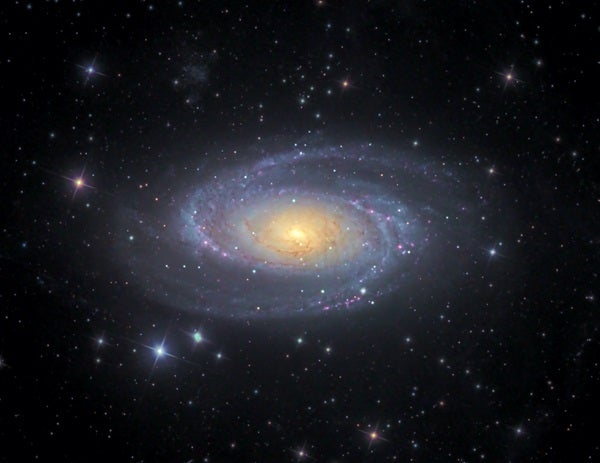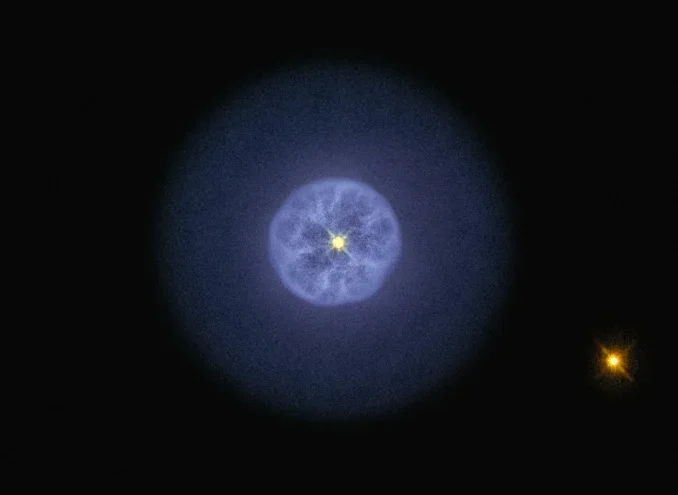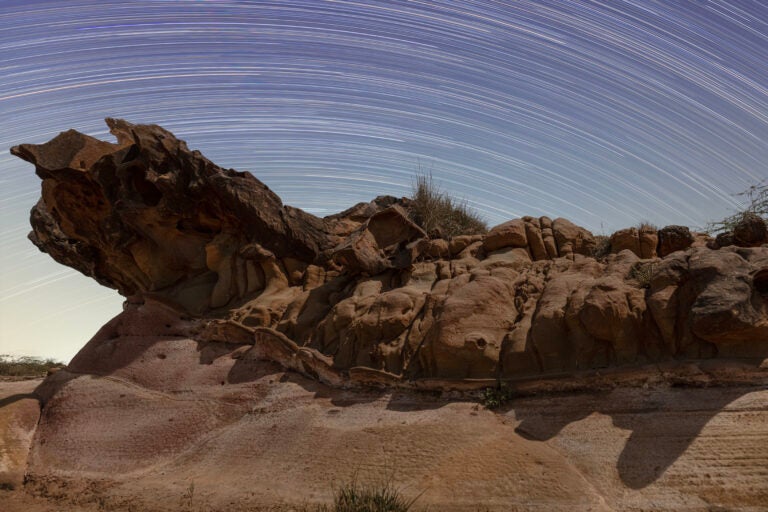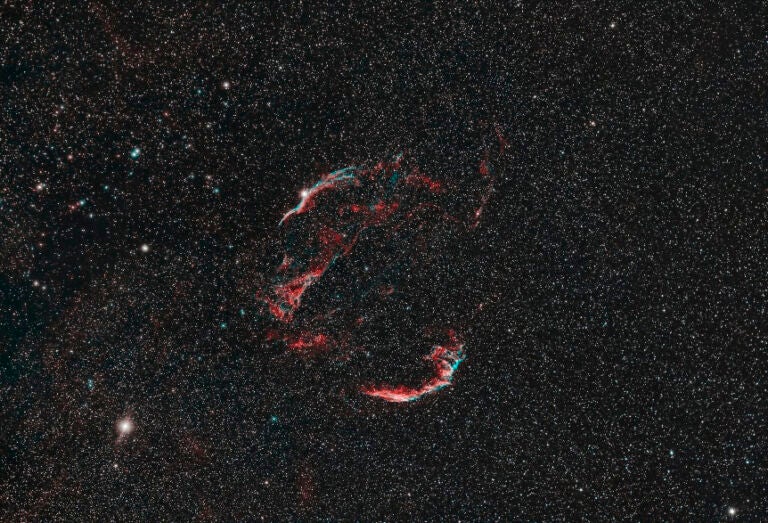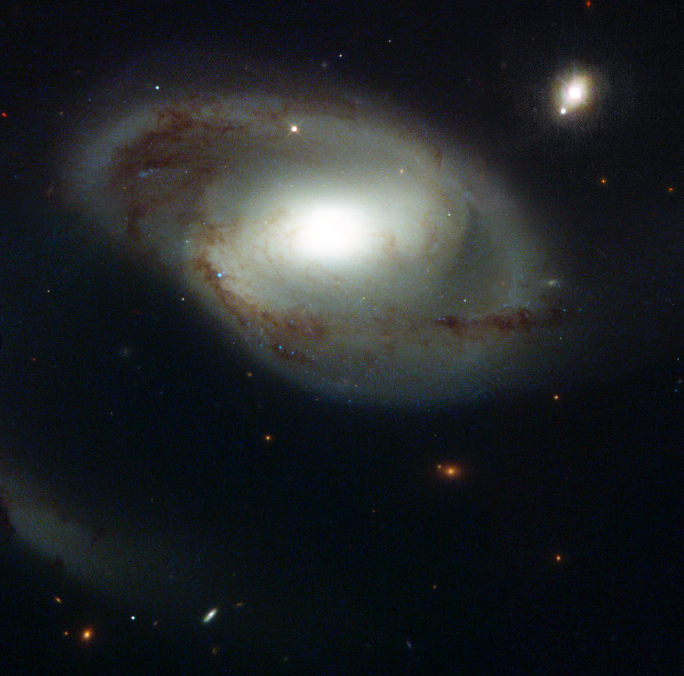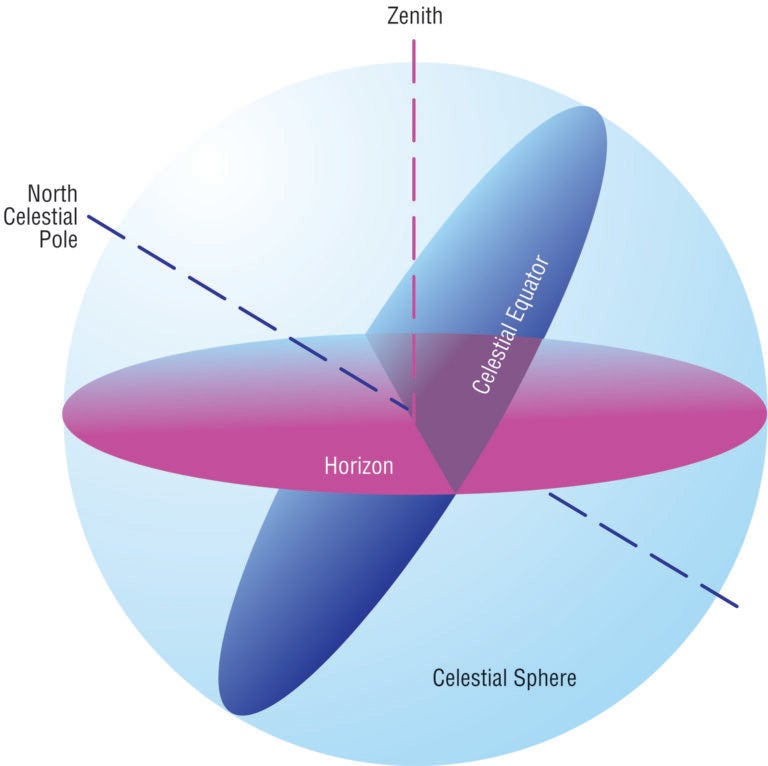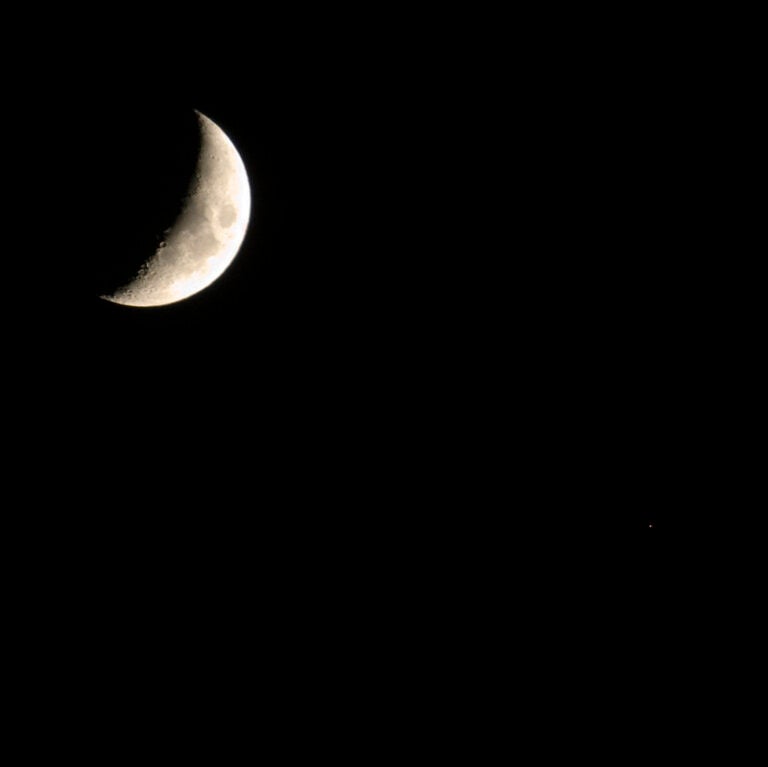M81 is one of the spiral wonders of the night sky. It joins neighboring galaxy M82 to make one of the most dynamic pairings of galaxies in the high northern heavens. At 12 million light-years distant, M81 is a primary member of the M81 Group of galaxies — one of the nearest groups of galaxies to our own Local Group. It is also one of the most distant objects in the universe accessible without optical aid.
German astronomer Johann Elert Bode discovered this “nebulous patch” Dec. 31, 1774, calling it “more or less round, with a dense nucleus in the middle.” Most observers following him hailed the brightness of the galaxy’s nucleus, including Isaac Roberts, who photographed it and described it as a “spiral with a nucleus.” Indeed, M81 was the first known spiral galaxy to reveal evidence of rotation.
M81 is similar to the Milky Way, resembling a grand-design spiral with two arms. But these arms consist of spiral fragments that branch into many secondary filaments. The arms also host a population of stars formed in an episode of star formation that started about 600 million years ago. This is evidence that M81 may be undergoing a surge of star formation along the spiral arms due to a close encounter with M82; the pair reached their closest points about 300 million years ago.
To find M81, look about 2° east of 24 Ursae Majoris. If you live under a dark sky, use binoculars first to locate the wonder, which will be paired with M82 just 38′ away. The telescopic view is splendid: A vast oblique glow, about the apparent size of the Full Moon, shines forth with a pale-yellow light punctuated by a vivid stellarlike nucleus. Two 11th-magnitude stars burn just south of the core and can easily be mistaken for supernovae. Ironically, in 1993, a supernova in M81 blazed to prominence just west of these stars. At magnifications of 70–150x, the galaxy core transforms into a misty spring of light caressed by dark vapors. Delicate wisps of spiral arms surround the core, and together they look like a still photograph of the grandest rotating lawn sprinkler in the cosmos.
Make sure to explore Astronomy’s full list of 101 cosmic objects you must see. New entries will be added each week throughout 2022.
To get the latest astronomical news and observing content delivered directly to your door, subscribe to Astronomy magazine today!

